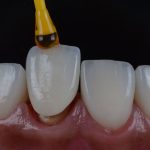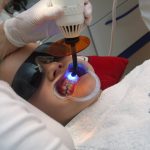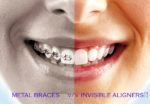Get a Perfect Smile: Closing Teeth Gap Without Braces in 5 Easy Steps
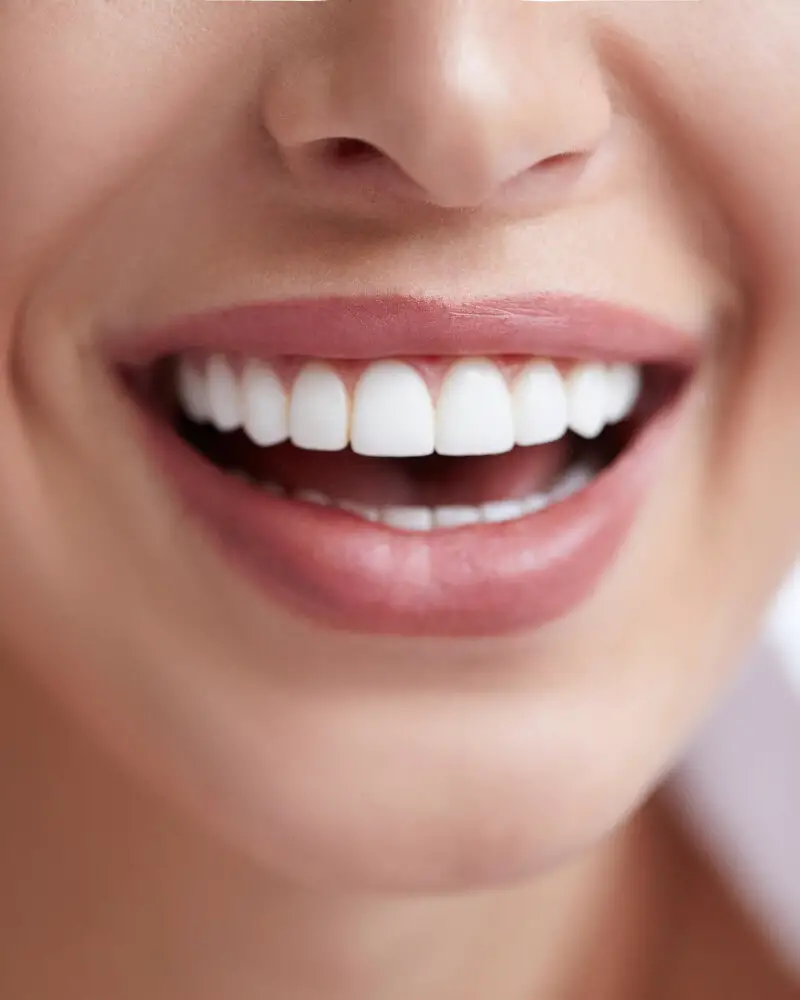
A person’s smile is one of the most important aspects of their appearance. A perfect smile can boost self-confidence and improve overall health. However, not everyone is born with a flawless set of teeth. Some people may have gaps between their teeth, which can be a source of insecurity. Fortunately, braces are not the only solution to close teeth gaps. In this article, we will explore five easy steps to achieve a perfect smile without braces. The first step to closing teeth gaps without braces is to identify the cause of the gap. There are several reasons why gaps may occur, including genetics, thumb-sucking, and gum disease. Once the cause is identified, it is easier to find the appropriate solution. In some cases, orthodontic treatment may still be necessary. However, there are other non-invasive options available that can be done at home. These steps include using dental bonding, veneers, and teeth bands, among others. By following these easy steps, you can achieve a perfect smile without the need for braces.
Teeth gap, also known as diastema, is a space or gap between two teeth, commonly between the two upper front teeth. This gap can be caused by various factors such as genetics, improper jawbone growth, or missing teeth. While some people may embrace their unique smile with a teeth gap, others may feel self-conscious about it. The impact of a teeth gap on one’s smile depends on the individual’s perception. Some people may find it endearing, while others may view it as a cosmetic flaw. For those who seek to close their teeth gap, there are several options available, including orthodontic treatment, dental bonding, or porcelain veneers.
While braces are a popular solution for correcting misaligned teeth, they are not always the best option. Braces can be uncomfortable, and the treatment period can be lengthy. Additionally, the cost of braces can be quite high, making them inaccessible for many people. In some cases, braces may not even be necessary to correct minor dental problems such as gaps between teeth. There are alternative methods of correcting minor dental issues that do not require braces, such as dental bonding or veneers. These options are often more affordable and less invasive than braces, making them a great choice for those who want to achieve a perfect smile without the hassle of traditional orthodontic treatment.
Step 1: Consult with a Dentist
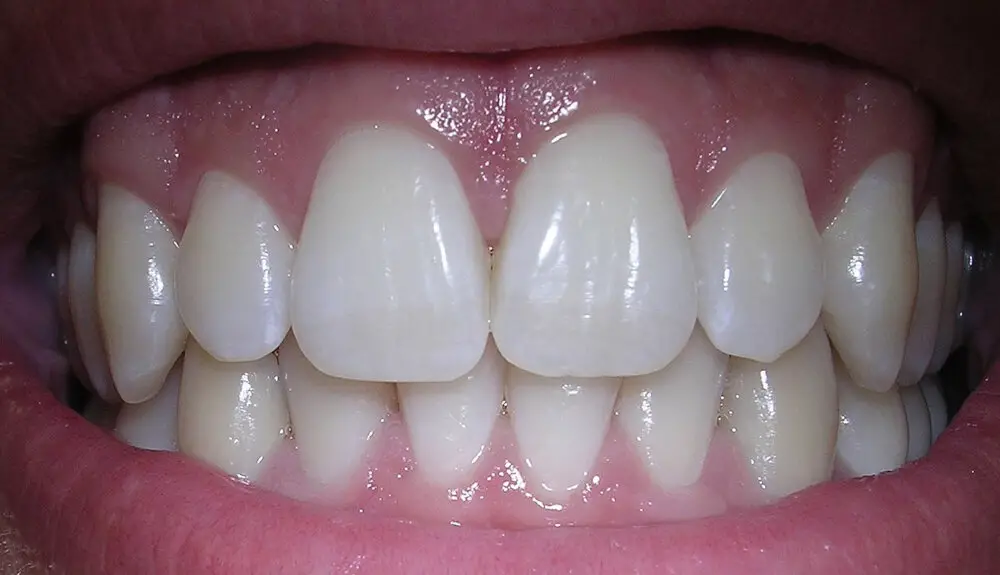
When it comes to closing the gap between your teeth, the first step is crucial. You need to consult with a dentist who can assess your dental condition and determine the best course of action. A dentist can evaluate your teeth and gums, check for any underlying issues that may affect the success of the treatment, and recommend the most suitable treatment option. During your consultation, the dentist will discuss your dental goals and preferences and provide you with all the necessary information about the treatment options available. They may recommend traditional braces, clear aligners, veneers, or other cosmetic dentistry procedures. Your dentist will also give you an estimate of the cost and duration of the treatment, so you can make an informed decision. Remember, the consultation is your opportunity to ask questions and express any concerns you might have, so take advantage of it to ensure that you are comfortable with the treatment plan.
Seeking professional advice is crucial when it comes to closing teeth gaps without braces. A professional dentist can assess the severity of the gap and recommend the most suitable treatment option. They can also provide valuable guidance on maintaining proper oral hygiene during and after the treatment. Attempting to close gaps without professional advice can lead to complications and can even worsen the condition. Therefore, it is essential to consult a professional dentist who can provide expert advice and help achieve the perfect smile.
A crucial aspect of achieving a perfect smile is the examination of teeth and gums. A dentist will evaluate the condition of your teeth and gums to determine the best course of action to close the gap between your teeth. This examination may involve checking for any cavities or other dental issues that need to be addressed before beginning any cosmetic treatments. Additionally, the dentist will assess the health of your gums, as gum disease can cause teeth to shift and weaken. By thoroughly examining your teeth and gums, the dentist can create a personalized treatment plan that will help you achieve the perfect smile you desire.
When it comes to closing a gap between your teeth, there are several treatment options available. Braces are the most common and traditional method, but they can be uncomfortable, unsightly, and costly. Clear aligners are an alternative to braces that are less noticeable and more comfortable to wear. Dental bonding is another option that involves applying a tooth-colored resin to the teeth to close the gap. Veneers are thin shells that are placed over the front of the teeth to improve their appearance, including closing gaps. Finally, in severe cases, dental implants or bridges may be necessary to replace missing teeth and close gaps. It is important to discuss these treatment options with your dentist or orthodontist to determine the best course of action for your individual needs.
Step 2: Use Teeth Bands
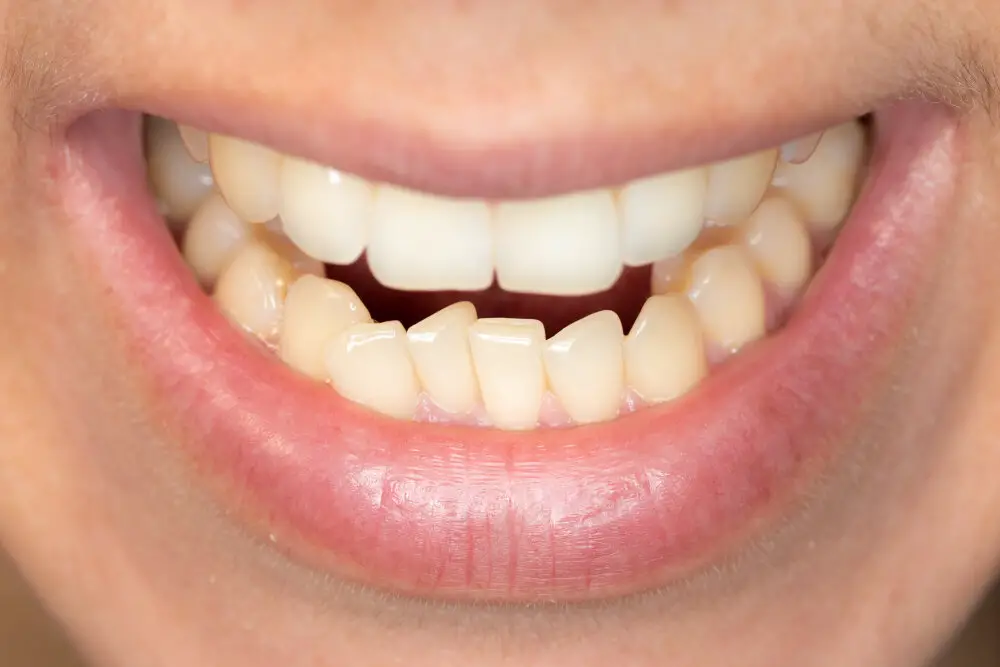
After you have assessed the size of your teeth gap and consulted with your dentist, it’s time to move on to the next step. This involves using teeth bands to gradually close the gap and achieve the perfect smile you’ve always wanted. Teeth bands are small, elastic bands that are placed around the teeth to apply pressure and push them together. They work by gradually shifting the teeth into the desired position and closing the gap. They are a popular alternative to braces, as they are affordable, easy to use, and can be done from the comfort of your own home. However, it is important to use teeth bands correctly and under the guidance of your dentist to avoid any potential damage to your teeth or gums. Using teeth bands requires patience and commitment, as it can take several months to see results. It is important to wear the bands consistently, typically for several hours a day, to achieve the desired effect. You may experience some discomfort or soreness in your teeth as they begin to shift, but this is normal and should subside over time. It is also important to maintain good oral hygiene during this process, as food particles can get trapped in the bands and lead to decay or gum disease. With proper use and care, teeth bands can be a highly effective way to close gaps and achieve a perfect, confident smile.
Teeth bands are a simple and affordable way to close gaps between teeth without the need for braces or other orthodontic treatments. These small elastic bands are placed around the teeth, applying gentle pressure to gradually move them closer together. They are typically used for small gaps and can be worn for several hours a day, although individual recommendations may vary. Teeth bands are a popular choice for those looking to improve the appearance of their smile without the inconvenience and expense of traditional braces. However, it’s important to note that teeth bands should only be used under the guidance of a dental professional to ensure safe and effective results.
Teeth bands are a popular method for closing gaps in your teeth without using braces. To use teeth bands, you should first clean your teeth and dry them thoroughly. Then, stretch the band and place it around the two teeth that you want to move closer together. You should wear the band for a few hours each day, gradually increasing the time until you reach 24 hours. It’s important not to wear the band for too long as this can damage your teeth. Also, make sure to regularly check the band for any signs of wear and replace it as necessary. With consistent use, teeth bands can be an effective and affordable way to close gaps in your teeth and achieve a perfect smile.
When it comes to closing teeth gaps without braces, there are a few potential side effects to consider. The most common side effect is tooth sensitivity, especially during the first few days after using aligners or other orthodontic devices. Irritation or soreness in the mouth can also occur due to the pressure exerted on the teeth. In rare cases, there may be some allergic reactions to the materials used in the devices, so it’s essential to inform your dentist if you have any allergies. Additionally, improper use or failure to follow instructions can lead to more severe issues, such as gum damage or tooth decay. Therefore, it’s crucial to consult with a dental professional and follow their guidance to minimize the risks and achieve the desired results.
Step 3: Try Bonding
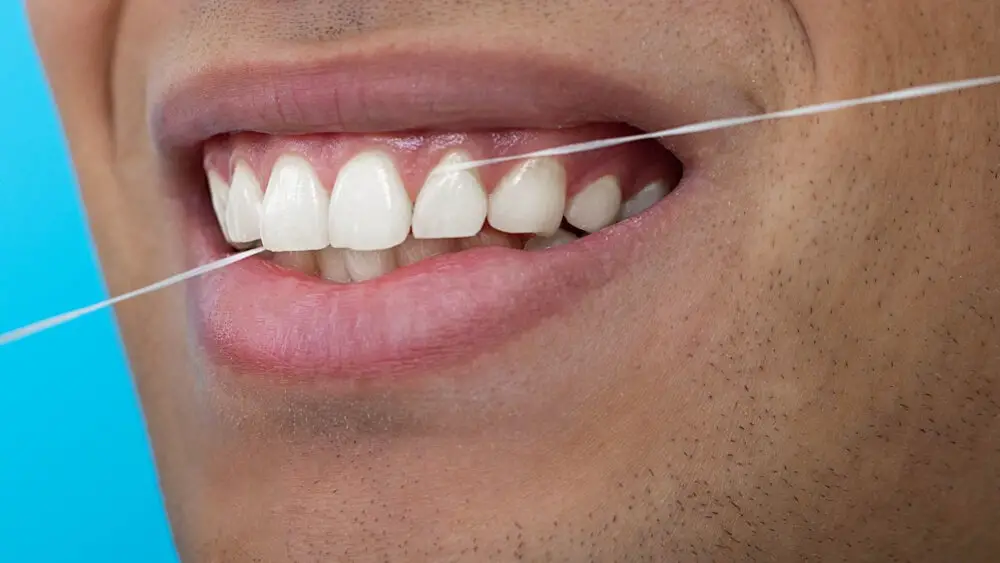
Step 3 of closing teeth gap without braces is all about bonding. Bonding is a cosmetic dental treatment that involves the application of tooth-colored resin to the surface of the teeth. The resin is then shaped and polished to match the natural teeth, giving the appearance of a perfect smile. Bonding is a quick and painless procedure that can be completed in just one visit to the dentist. It is an ideal solution for closing small gaps between teeth, as well as repairing chipped or discolored teeth. The treatment is also affordable and can be an excellent alternative to more expensive dental procedures such as veneers or orthodontics. Bonding is a straightforward procedure that requires no anesthesia, and the results are immediate. The dentist will first prepare the teeth by roughening the surface to ensure the bond will stick. The resin is then applied to the teeth, and the dentist will use a special light to harden the material. Once the bonding material has cured, the dentist will shape and polish it to match the surrounding teeth, giving it a natural appearance. Bonding is a great solution for those who want to improve their smile quickly and easily, without the need for braces or other orthodontic treatments. With proper care, bonding can last for several years, making it an excellent investment in your smile.
Bonding is a cosmetic dental procedure that involves the application of a tooth-colored resin material to the surface of the teeth. This material is then shaped and polished to match the surrounding teeth, effectively closing any gaps or spaces between them. Bonding is a quick and painless procedure that can be completed in a single visit to the dentist’s office. It is a cost-effective alternative to traditional braces or veneers and is ideal for individuals who want to improve the appearance of their smile without undergoing extensive dental work. Bonding is also a great solution for fixing minor chips, cracks, or discolorations in the teeth. With proper care, bonding can last for several years and provide a beautiful, natural-looking smile.
Bonding is a dental procedure that involves the application of a tooth-colored resin material to repair or improve the appearance of a tooth. It works by bonding the resin material to the tooth using a special adhesive. The process involves preparing the surface of the tooth by etching it with a special solution, followed by the application of the bonding agent. The resin material is then applied in layers and shaped to match the natural contours of the tooth. Once the desired shape is achieved, the material is cured with a special light, which hardens the resin and bonds it to the tooth. Bonding can be used to close small gaps between teeth, fix chipped or cracked teeth, and improve the appearance of discolored or misshapen teeth. It is a quick and painless procedure that can be completed in a single visit to the dentist.
Bonding is a popular cosmetic dental procedure that can effectively close gaps between teeth. One of the main pros of bonding is its affordability compared to other cosmetic procedures. It is also a relatively quick process and can be completed in one visit to the dentist. Additionally, bonding does not require any removal of natural tooth structure, making it a less invasive option. However, there are also cons to consider. Bonding material is not as durable as other options like veneers, and may need to be replaced over time. It is also more prone to staining and discoloration, which can make it difficult to maintain a bright, white smile. Ultimately, the decision to choose bonding should be made in consultation with a dentist, who can evaluate individual needs and recommend the best treatment option.
Step 4: Consider Veneers

Veneers are an excellent option for closing teeth gaps without braces. These wafer-thin shells of porcelain or composite resin are custom-made to fit over the front surface of your teeth. They are an excellent way to improve the appearance of your teeth, as well as their shape and size. Veneers are also a great solution for discolored or chipped teeth. They are durable and long-lasting, and they can be used to correct a wide range of dental problems. If you are considering veneers, it is essential to find a qualified cosmetic dentist who has experience in this procedure. Your dentist will examine your teeth and discuss your goals to determine if veneers are the right option for you. They will take impressions of your teeth and send them to a dental laboratory, where your veneers will be custom-made. Once your veneers are ready, your dentist will bond them to your teeth, giving you a beautiful, natural-looking smile that you can be proud of. With proper care, veneers can last for many years, making them an excellent investment in your dental health and appearance.
Veneers are a popular cosmetic dental treatment that can help you achieve a perfect smile. They are thin, custom-made shells that are placed over the front surface of your teeth to improve their appearance. Veneers can be used to fix a variety of dental issues, such as gaps between teeth, misaligned teeth, and discoloration. They are made from either porcelain or composite resin and are designed to match the color and shape of your natural teeth. The process of getting veneers typically involves two visits to the dentist, during which the teeth are prepared, impressions are taken, and the veneers are placed. With proper care, veneers can last for many years and provide you with a beautiful, confident smile.
Veneers are thin, custom-made shells that are placed over the front surface of teeth to improve their appearance. They are typically made of porcelain or composite resin and can be used to cover a variety of dental imperfections, including gaps between teeth. The veneers are bonded to the teeth using a strong adhesive, which allows them to stay in place for many years. Veneers not only provide a quick and effective solution for closing gaps between teeth, but they can also improve the overall shape, size, and color of your teeth, giving you a perfect and confident smile.
Veneers are a popular cosmetic dental treatment that can provide a perfect smile by closing gaps between teeth. These thin shells are made of porcelain or composite resin and are bonded to the front of the teeth. The main advantage of veneers is that they can dramatically improve the appearance of teeth in just a few appointments. They can also be used to correct a variety of cosmetic issues, including discoloration, chipping, and misshapen teeth. However, there are also some drawbacks to consider. Veneers are not a permanent solution and may need to be replaced over time. Additionally, the process of preparing the teeth for veneers involves removing some of the natural tooth structure, which can increase the risk of sensitivity or damage to the tooth. Finally, veneers can be expensive, making them an investment that may not be accessible to everyone.
Step 5: Use Aligners

After the completion of the fourth step, the dentist will provide the patient with custom-made aligners that will help in closing the gap between their teeth. These aligners are made of clear plastic and are practically invisible, making them an excellent alternative to traditional braces. The aligners will be worn for approximately 20-22 hours a day, and they should only be removed during meals and brushing. The aligners are changed every two weeks, with each new set gradually shifting the teeth until the desired result is achieved. Using aligners is a convenient and comfortable way to close gaps between teeth. Unlike braces, aligners don’t require any wires or brackets that can cause discomfort or irritation. Moreover, aligners are removable, which means that patients can continue to eat their favorite foods without restrictions. Additionally, aligners are easy to clean, and patients don’t have to worry about food getting stuck in between the wires or brackets. Overall, aligners offer a convenient and efficient way to close teeth gaps, while providing patients with a comfortable and discreet treatment option.
Aligners are a modern alternative to traditional braces that have gained popularity in recent years. They are custom-made clear plastic trays that fit over the teeth to gradually move them into the desired position. Unlike braces, aligners are virtually invisible, making them a discreet option for those who are self-conscious about their appearance. They are also removable, allowing for easier cleaning and maintenance of dental hygiene. Aligners work by applying gentle pressure to specific teeth, which is why they need to be changed every few weeks to keep up with the movement of the teeth. They are an effective option for closing teeth gaps and correcting minor crowding or spacing issues, but may not be suitable for more complex orthodontic cases.
Aligners are clear plastic trays that are designed to fit over your teeth to gently shift them into the desired position. They work by applying a constant, gentle force on the teeth, which gradually moves them into alignment. Each aligner is custom-made to fit your teeth precisely and is worn for a certain period of time, typically two weeks, before being replaced with the next aligner in the series. Over time, as you progress through the series of aligners, your teeth will gradually move into the desired position, closing any gaps and creating a straighter, more even smile. Aligners are a popular alternative to traditional braces because they are virtually invisible, comfortable to wear, and can be easily removed for eating and oral hygiene.
Aligners are a popular alternative to traditional braces for those seeking to close gaps in their teeth. One of the biggest pros of aligners is their discreet appearance. Unlike bulky metal braces, aligners are virtually invisible, making them a more attractive option for those who are conscious of their appearance. Additionally, aligners can be removed for eating and brushing, which makes them more convenient and easier to maintain proper oral hygiene. However, aligners can also have some cons. They may not be as effective as traditional braces for severe dental issues, and they require consistent wear to see results. Aligners can also be more expensive than braces, making them less accessible to some individuals. Overall, while aligners offer many benefits, it’s important to consult with a dental professional to determine if they are the right option for your specific dental needs.
Getting a perfect smile without braces is now possible with these five easy steps. Firstly, using dental bands to tighten the gap by placing them around your teeth. Secondly, wearing a removable retainer for a few hours every day to help close the gap. Thirdly, dental bonding that uses tooth-colored resin to fill the gap seamlessly. Fourthly, porcelain veneers that are thin shells placed over the front of teeth to cover the gap. Finally, dental crowns that cover the entire tooth to close the gap and improve the appearance of teeth. By following these easy steps, you can get a perfect smile without braces and regain your confidence.
Consulting with a dentist is crucial when it comes to oral health and achieving the perfect smile. Regular dental check-ups can help diagnose and treat dental issues before they escalate and become painful, costly, or even lead to tooth loss. Additionally, a dentist can provide professional advice on the best dental practices, including brushing and flossing techniques, and recommend specific treatments, such as teeth whitening or braces, to improve the appearance and functionality of your teeth. Seeking the expertise of a dentist can be the difference between a healthy, confident smile and a mouth full of dental problems.
Having a perfect smile can boost your confidence and enhance your overall appearance. If you have a teeth gap that makes you self-conscious, it’s time to take action and close it. Don’t let the fear of braces or the time it takes to achieve a perfect smile hold you back. With the five easy steps outlined in this article, you can achieve a beautiful smile without braces. Take the first step towards a perfect smile today and start your journey towards a happier, more confident you. Remember, a perfect smile is within your reach!
Conclusion

In conclusion, closing teeth gaps without braces can be achieved through several easy steps. From using dental bonding to wearing aligners, there are various options available for individuals who want to achieve a perfect smile. However, it is important to consult a dental professional to determine the most suitable solution for your unique situation. With patience and dedication, you can attain the beautiful smile you desire and boost your confidence in the process. Don’t let gaps in your teeth hold you back any longer. Take action and start your journey towards a perfect smile today!

